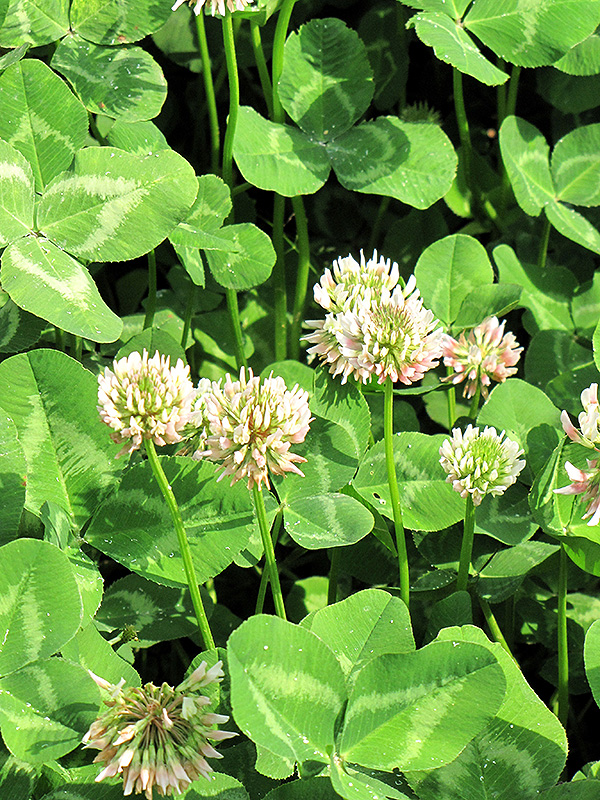White Clover
Trifolium repens 'var. repens'
Add To My Wish List
Plant Height: 3 inches
Flower Height: 4 inches
Spread: 3 feet
Sunlight:
![]()
![]()
Hardiness Zone: 3
Other Names: Dutch Clover
Description:
An interesting form of white clover featuring medium green leaves with silver-gray variegation; the roots of this plant fix nitrogen in the soil; potentially invasive, rooting at the nodes; use where it can roam freely as groundcover, with shrubs or bulbs
Ornamental Features
White Clover has masses of beautiful spikes of lightly-scented white ball-shaped flowers with shell pink streaks at the ends of the stems from mid spring to mid fall, which are most effective when planted in groupings. Its attractive round palmate leaves remain emerald green in color with showy gray variegation throughout the season.
Landscape Attributes
White Clover is a dense herbaceous perennial with a ground-hugging habit of growth. Its medium texture blends into the garden, but can always be balanced by a couple of finer or coarser plants for an effective composition.
This is a high maintenance plant that will require regular care and upkeep, and is best cleaned up in early spring before it resumes active growth for the season. It is a good choice for attracting bees and butterflies to your yard. Gardeners should be aware of the following characteristic(s) that may warrant special consideration;
- Invasive
White Clover is recommended for the following landscape applications;
- Mass Planting
- Groundcover
- Naturalizing And Woodland Gardens
Planting & Growing
White Clover will grow to be only 3 inches tall at maturity extending to 4 inches tall with the flowers, with a spread of 3 feet. Its foliage tends to remain low and dense right to the ground. It grows at a fast rate, and under ideal conditions can be expected to live for approximately 10 years. As an herbaceous perennial, this plant will usually die back to the crown each winter, and will regrow from the base each spring. Be careful not to disturb the crown in late winter when it may not be readily seen!
This plant does best in full sun to partial shade. It does best in average to evenly moist conditions, but will not tolerate standing water. It is not particular as to soil pH, but grows best in clay soils. It is somewhat tolerant of urban pollution. This is a selection of a native North American species. It can be propagated by division; however, as a cultivated variety, be aware that it may be subject to certain restrictions or prohibitions on propagation.

